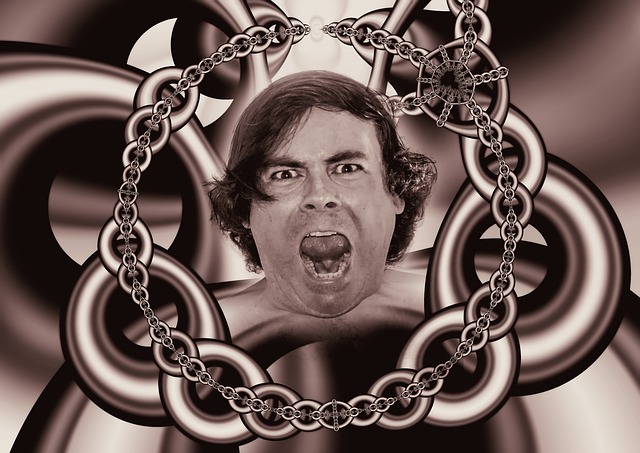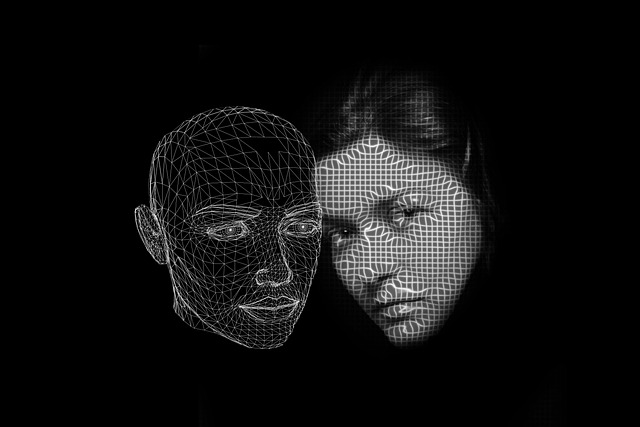The Enigma of Narcissism in Modern Society
Narcissism has long been a term both whispered and weaponized. It evokes fascination and fear in equal measure—a blend of charm, ambition, and quiet menace. Society often views narcissists as self-absorbed or egocentric, yet beneath that glossy exterior lies a far more intricate psychological construct.
Narcissistic Personality Disorder (NPD) is not simply self-love gone awry; it is a profound disconnection from empathy, rooted in insecurity and masked by grandeur. Unlike ordinary confidence, NPD embodies an existential hunger for admiration—a constant need to be validated and revered.
In today’s hyperconnected world, where likes and follows equate to worth, NPD’s relevance has soared.
What Is Narcissistic Personality Disorder?
Clinically, NPD is defined as a pervasive pattern of grandiosity, a deep need for admiration, and a lack of empathy, often beginning by early adulthood and manifesting across contexts. It’s not about confidence—it’s about compulsion.
Healthy self-esteem is flexible, grounded in self-acceptance and resilience. When admiration is withdrawn, rage and defensiveness quickly emerge.
Popular myths often reduce NPD to vanity or arrogance. In truth, many individuals with NPD suffer deeply, oscillating between inflated self-importance and crippling self-doubt. What appears as self-worship often conceals profound emotional fragility.
Historical Roots of Narcissism

Photo by Pixabay / Free to use under license.
The origin of the term stems from the ancient Greek myth of Narcissus, who fell in love with his reflection, unable to detach from his own image. It is a tale not merely of beauty, but of blindness—self-obsession leading to self-destruction.
Sigmund Freud was among the first to psychoanalyze narcissism, describing it as a developmental stage necessary for identity formation, but dangerous when fixation occurs. Later theorists expanded this idea, framing narcissism as both a defense mechanism and a relational failure.
Core Characteristics of NPD
Behind the grandiose façade lies a fragile ego, perpetually on guard against humiliation. Narcissists crave admiration yet fear exposure; their confidence is a mirage maintained through manipulation and control.
Entitlement and superiority are hallmark traits. They perceive themselves as exceptional and demand special treatment, often disregarding others’ boundaries or perspectives.
Emotional coldness defines many with NPD. They struggle to recognize or value others’ feelings, viewing relationships as tools for self-enhancement rather than connection. Beneath this detachment, however, lurks a profound fear of rejection—a terror of being ordinary or unseen.
Subtypes of Narcissistic Personality Disorder
The overt narcissist exudes dominance and charisma, their arrogance impossible to miss. They command attention, often charming and destructive in equal measure.
The covert narcissist, by contrast, hides behind vulnerability. Their insecurity fuels passive-aggressive manipulation, drawing sympathy instead of awe.
Communal narcissists project benevolence—championing causes and helping others—but their altruism masks a hunger for recognition.
Malignant narcissists represent the darkest form, where narcissism intertwines with aggression and sadism. Their charm conceals cruelty, making them dangerously persuasive and remorseless.
How NPD Develops: The Psychological and Environmental Origins
Childhood lays the foundation for narcissism. Overly critical or excessively indulgent parenting can distort self-concept, breeding entitlement or emptiness.
Trauma, neglect, or inconsistent affection teach the child that love is conditional, prompting a lifelong pursuit of validation. The self becomes a construct designed to please and dominate.
Studies suggest a genetic component, with neurological findings indicating irregularities in brain regions tied to empathy and self-regulation.Society itself becomes a mirror that reflects and inflates ego.
NPD in the Digital Era
The endless feedback loop of likes, followers, and digital applause nurtures an obsession with appearance and performance.
Influencer culture, built on curated perfection, amplifies narcissism by equating visibility with value. Yet digital narcissism is not identical to clinical NPD—it is a cultural phenomenon, while the disorder runs far deeper, anchored in psychological dysfunction.
Nevertheless, technology has blurred the line between personality and pathology, making self-promotion a societal norm and empathy increasingly elusive.
Recognizing NPD in Relationships
In romance, narcissists often appear enchanting. Their confidence feels intoxicating—until it becomes controlling. The relationship unfolds in three acts: idealization, devaluation, and discard.
Love bombing overwhelms the partner with attention and affection, creating dependency. Once secured, the narcissist withdraws warmth, using gaslighting and manipulation to maintain dominance.
The aftermath is emotional devastation. Partners often experience confusion, guilt, and loss of identity—echoes of psychological warfare disguised as love.
The Narcissist’s Relationship with Themselves
Paradoxically, narcissists are estranged from their own emotions. Their self-image, meticulously constructed, conceals profound insecurity.
External validation becomes oxygen. Without admiration, they feel invisible, worthless, enraged. Their grandiosity is a fortress built against self-loathing.
Behind the mask of confidence lies self-hatred—a deep-seated belief in unworthiness that no amount of praise can cure.
Workplace Narcissism: Power, Control, and Exploitation

Photo by Pixabay / Free to use under license.
The workplace offers fertile ground for narcissists, who often rise quickly through charm, ambition, and ruthlessness. Their leadership style may inspire—or devastate.Beneath their charm lies manipulation, turning workplaces toxic and unstable.
Survival requires boundaries, emotional detachment, and strategic communication. To confront such personalities without self-destruction demands both strength and subtlety.
Social and Cultural Manifestations of Narcissism
Modern culture idolizes self-image.Consumerism feeds the illusion that self-worth can be purchased, while politics often rewards charisma over character. Collective narcissism emerges when entire groups view themselves as superior, defending identity through ego rather than empathy.
This cultural narcissism mirrors the individual disorder—grand, insecure, and dangerously self-absorbed.
The Impact of NPD on Mental Health and Wellbeing
Beneath the surface, individuals with NPD often suffer silently. Anxiety, depression, and chronic emptiness accompany their pursuit of admiration.
Substance abuse may serve as an anesthetic for emotional pain. The façade must be maintained at all costs, even as internal dissonance grows unbearable.
For loved ones, the toll is immense—emotional exhaustion, self-doubt, and trauma responses that can last years after the relationship ends.
NPD vs. Other Personality Disorders
While Borderline Personality Disorder is defined by fear of abandonment, NPD is characterized by fear of insignificance. The antisocial personality seeks power through manipulation, the narcissist through admiration.
Histrionic traits overlap—drama, attention-seeking—but the motivation differs: narcissists crave reverence, not merely notice.
When narcissism merges with psychopathy, empathy disappears entirely, giving rise to the most destructive personality profiles imaginable.
Diagnosis: How Professionals Identify NPD

Photo by Pixabay / Free to use under license.
Psychiatrists rely on DSM-5 criteria, assessing patterns of grandiosity, entitlement, and lack of empathy across multiple settings.
Clinical interviews and personality inventories help reveal underlying motivations, though diagnosis is complex—many narcissists resist introspection or deny their flaws altogether.
Their self-protective nature makes diagnosis both an art and a challenge.
Treatment and Management Approaches
Psychotherapy remains the primary treatment, particularly psychodynamic and schema therapy, which target maladaptive patterns formed in childhood.
Cognitive-behavioral therapy can help patients identify distortions in self-perception and develop empathy skills.
Yet treating NPD is uniquely demanding. The therapist must navigate manipulation, defensiveness, and resistance while fostering trust.
Medication may alleviate comorbid symptoms like anxiety or depression but cannot address narcissism itself.
Is Recovery Possible? The Controversy of Change
Can a narcissist truly change? Opinions diverge. Some achieve self-awareness and emotional growth through long-term therapy; others remain trapped in their grandiose delusions.
Empathy and humility, once foreign concepts, can emerge—but only with deep introspection and sustained effort. Recovery is not a cure; it is a process of managing impulses and nurturing authentic connection.
The path is arduous but not impossible.
Living or Working with Someone with NPD
Survival requires strategy. Boundaries must be firm, communication clear, and expectations realistic.
Detachment is vital—not as cruelty, but as preservation. Emotional distance allows one to see manipulation without succumbing to it.
NPD in Popular Culture and Media Representation
Television and cinema often romanticize narcissism, portraying it as charisma, genius, or leadership. Yet these depictions distort reality, erasing the pain narcissists inflict on others.
Characters like the charming villain or self-absorbed antihero embody society’s fascination with narcissism—a mirror of our collective ego.
Such portrayals blur the line between pathology and personality, making it crucial to separate entertainment from empathy.
Raising Awareness and Reducing Stigma
True understanding begins with nuance. Not every confident person is a narcissist, and not every narcissist is a villain.
Education promotes compassion—without enabling abuse. By recognizing NPD as a complex psychological disorder, society can shift from ridicule to responsibility.
Awareness fosters healthier relationships, workplaces, and communities where empathy is not mistaken for weakness.
Conclusion: Understanding NPD Beyond the Label
To comprehend NPD is to look past the mirror—to see the wounded self behind the mask of perfection.
Compassion must coexist with caution, for empathy without boundaries invites harm.




